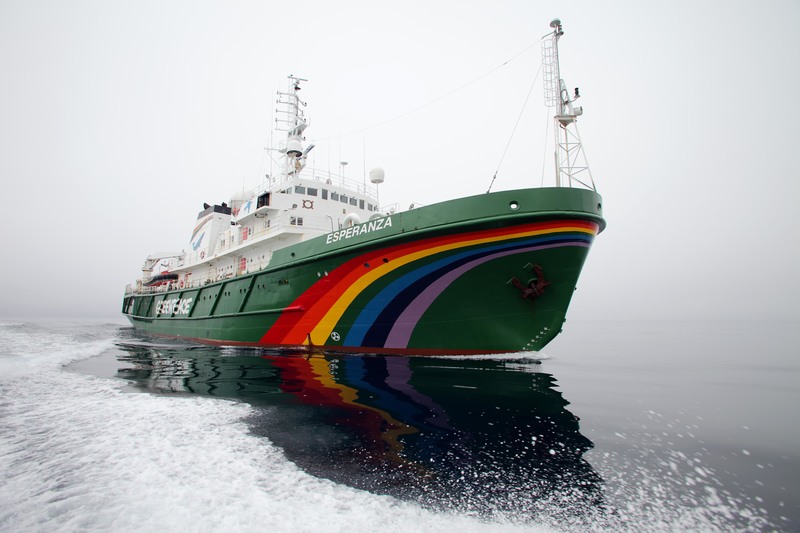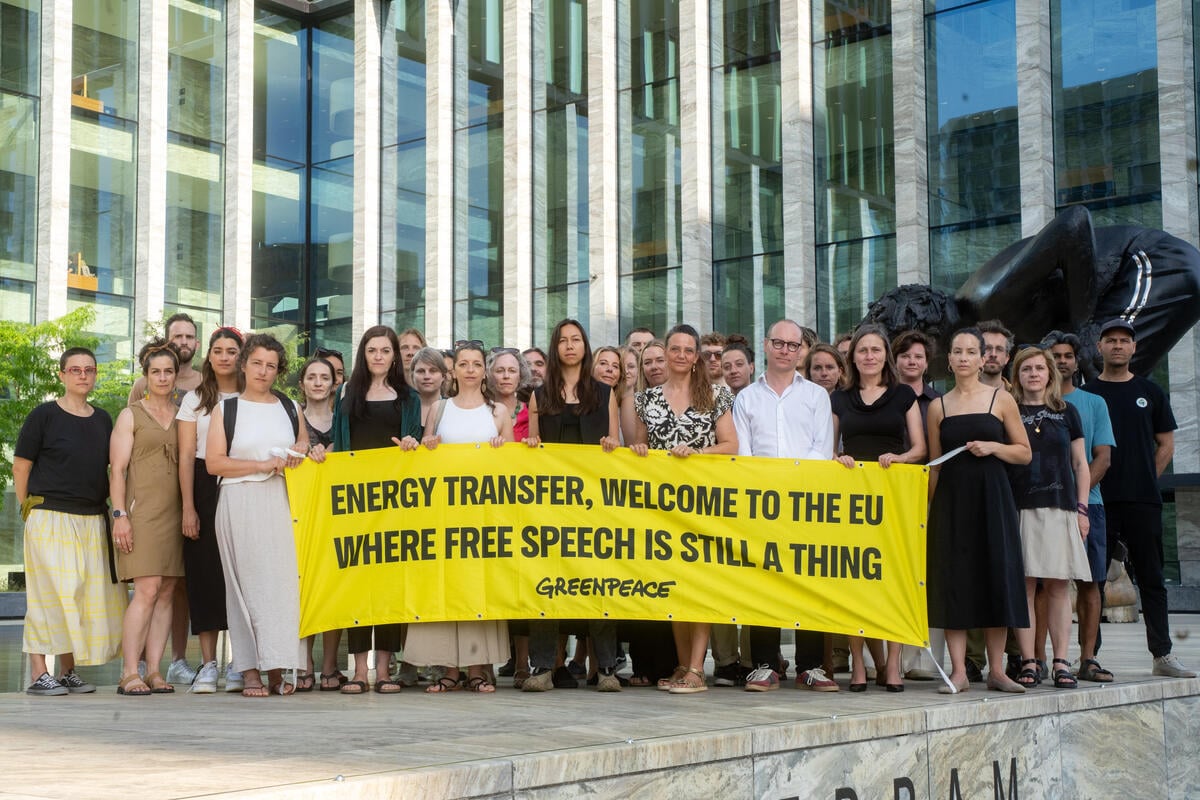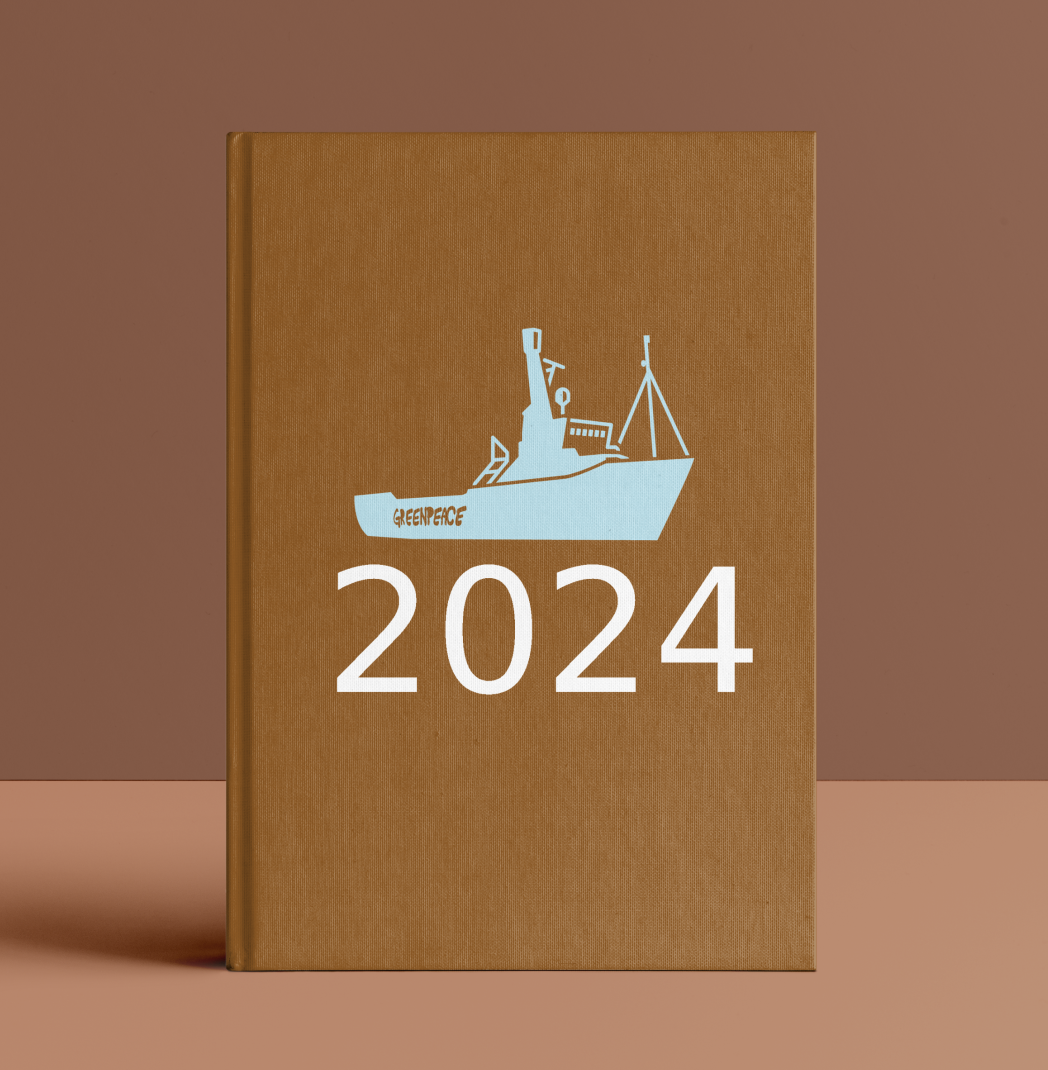For over 20 years a Greenpeace ship called Esperanza – ‘Hope’ in English – lit up the darkness in the fight to protect the environment. Its voyages have now come to an end, leaving a proud legacy of inspiration and environmental protection.
Over the course of two decades, the crew of the Esperanza confronted pirate fishing and whaling harpoons, from the polar regions to West Africa, teamed up with scientists and journalists to reveal illegal activities and conduct groundbreaking studies. They fought on behalf of people and planet against those who are prepared to sacrifice both for profit and power.
The ‘Espy’, as it is lovingly known inside Greenpeace, carried our activists to parts of the world that are inaccessible to most. It’s often in these most remote areas where the worst environmental and humanitarian crimes take place. It brought aid and humanitarian relief to those in need in the aftermath of the Haiti earthquake of 2010, and 2012’s Typhoon Bopha, which devastated swathes of the Philippines.
As the fastest ship in the Greenpeace fleet, the Esperanza was often used to chase high-speed vessels and to confront environmental criminals few others could catch. The Esperanza’s ice-class credentials meant it took these fights into the freezing waters of the Antarctic in numerous polar expeditions.
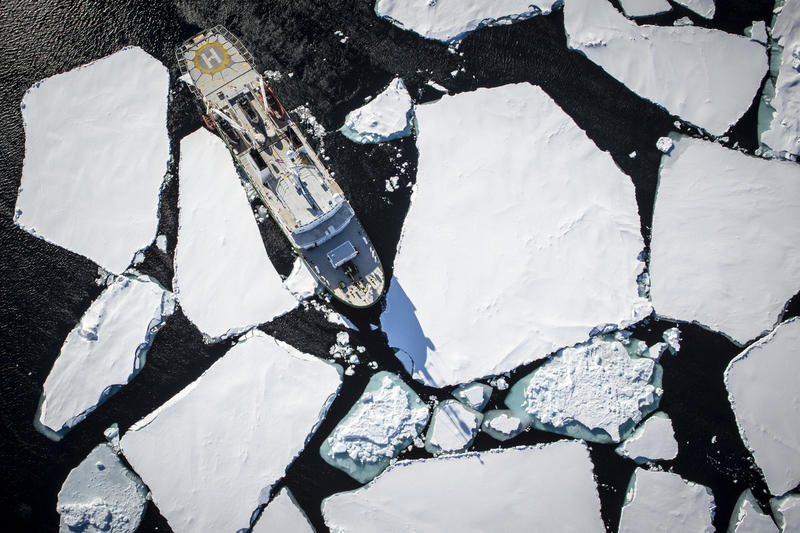
It was, and always will be, a symbol of hope, born from the support of millions of people around the world and put into action by those who risked their safety and lives to stand against impossible odds for the protection of our shared environment.
Now, the Esperanza has arrived at its final port stop in Gijón, Spain and in the coming weeks will be retired for good.
As the world changes, so must Greenpeace’s maritime operations. The Esperanza, even with its electric drive, had a much larger carbon footprint than other Greenpeace vessels and despite the constant efforts of dedicated crew, technicians, volunteers and supporters to hone and improve the ship’s technical features, its fundamental biology does not allow it to be consistent with Greenpeace’s vision for a zero-carbon future.
The crew of the Esperanza launched solar-powered aircraft, helicopters and submarines from its decks and gave the ship many green renovations from the start of service and throughout its life, but in the midst of a climate emergency with environmental crimes still being committed all over the world, Greenpeace needs to lead the way on carbon emissions while at the same time finding more flexible and local maritime resources to allow us to take the fight to remote places few can go.
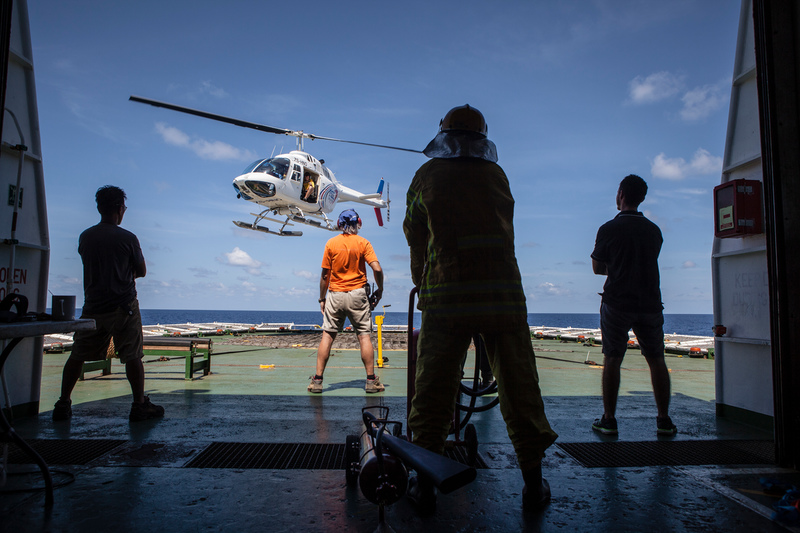
Indeed, while the Esperanza will now be dismantled, to the highest environmental standards, its spirit and the hope that it represents will live on in the continuing fight to protect our fragile Earth.
Hope floats
Before joining the Greenpeace fleet in 2000, the ship, which began life as a Russian fire fighting vessel, had been known as ‘Echo Fighter’. The first Greenpeace crews aboard painted out the ‘h’ to spell ‘Eco Fighter’, but as the organisation began an environmentally friendly refit of the vessel an online vote was called to choose a permanent name. Thousands of activists in Argentina and other Hispanic countries saw a historic opportunity for the first ever Greenpeace ship with a Spanish name. Bringing together their enthusiasm for action at sea and the emerging digital activism of the era, they flooded the vote with one name: ‘Esperanza’.
For more than two decades the Esperanza’s story has been the sum of the actions of its talented and dedicated crew, the brave activists and volunteers who called it home, the teams who helped to deliver hope in action through campaigns and the supporters who brought the Esperanza into the Greenpeace fleet, named the ship, and stood behind it on every part of its journey.
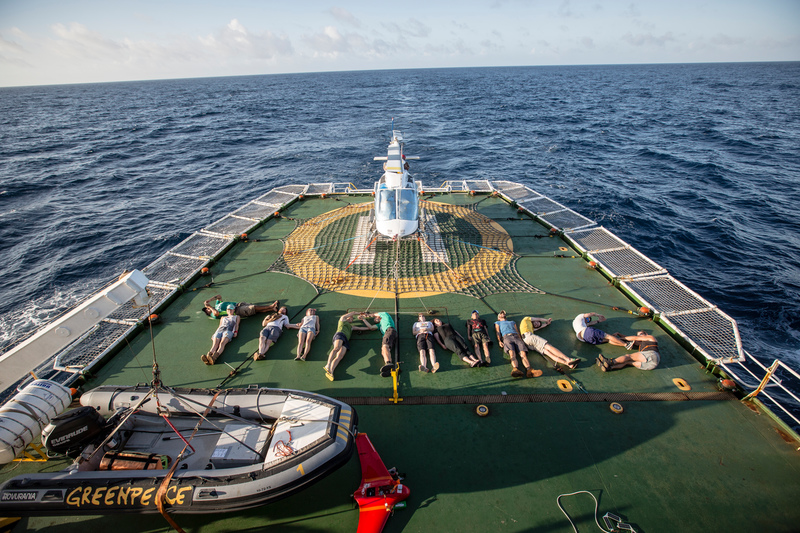
The Esperanza has hundreds of thousands if not millions of people to thank. It is perhaps fitting that the ship’s final destination is in a Spanish-speaking country: the language of its name’s birth.
To those people, and all of you, who have carried the light of hope in your hearts, we say “gracias”. While we don’t know for sure all the places that light will be needed in the future, we do know it will never be extinguished, and we will bring wherever it needs to go, together.
It is often said that a ship is so much more than the physical construction: it comprises the heart and soul of the people who make it go. As the French writer Antoine de Saint-Exupéry said: “If you want to build a ship, don’t gather up people to collect wood or assign tasks and work, but rather teach them to long for the endless immensity of the sea.”
